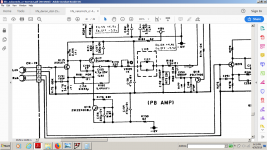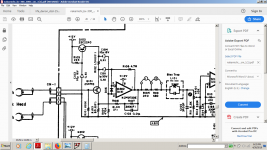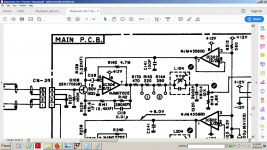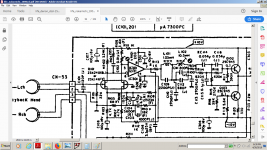with its pin arangement and slew rate, any layout would work unless you really want to screw it 🙂This is way op amp layout SHOULD be done. See fig. 60.
http://www.ti.com/lit/ds/symlink/opa1622.pdf
with its pin arangement and slew rate, any layout would work unless you really want to screw it 🙂
Why freeze the package in 1965 with an inferior layout? That's screwing it.
We still lack a satisfactory way to technically describe "better", especially when sound is involved. The scrutinizing is done only on electrical signal most of the time, disregarding the sound itself. 😀... does not stand up to scrutiny - like 'tubes sound better' or...
For diy purpose this chip is useless without that adapter.
I design a new board for every project. Boards are very cheap.
Even tube people don't expect all tubes to have the same base pinout.
Last edited:
Tournesol, you are funny. Those who do not hear a difference have no problem whatsoever. They are the extremely lucky few who reached the end of the road, no need to search anymore. 🙂... If your answer is "No, I can't" you have a problem. Or your system is very bad, or your ears....
For diy purpose this chip is useless without that adapter.
Why? PCBs are cheap, it's an easy hand solder...
Why? PCBs are cheap, it's an easy hand solder...
But we've always done it this way. Why change just to make it better?
All resistors, capacitors, and connectors have the same footprints, right?
Last edited:
We have a paradoxical behaviour about diy...I design a new board for every project. Boards are very cheap.
Even tube people don't expect all tubes to have the same base pinout.
We expect that tweaking and replacing components by experiment would give us more control than a designed circuit in spice-cad software , but then we utterly reject the opinions of those guys who try it differently by regulating the bussines in such a way that only the robots will be able to make it so that there wont't be many diy guys to f...k with, so we should all meet in China from now on!
The fact that all the new op-amps come in unfriendly packages will make us tinker more wrongly made chinese pcb's...cause we won't spent hundreds of dollars on devellopement kits, nor we are too happy with changing all our habits to accommodate new design practices.Are you willing to try 100 different pcb's or to spend months in designing an universal pcb for all the trials you want to have?
Maybe it's the end of diy era...we should let the robots and the Chinese to design for us too and we should just listen to some more music , enjoying our freedom from the technical world, is it?
This is not to slight you in the least because you do/did some fine things, but I want to paraphrase Bruno: good engineering starts by defining specs. Also trying to define the way to achieve those is asking for trouble.
I always define what I want before designing and building. What makes you think i dont?
THx-RNMarsh
And yet people sing the praises of discrete designs with near 0dB PSRR 😀
It used to be important. And, it still might be in equipment with pcb's loaded with many opamps on it powered by a single bussed supply.
But, now with all audio circuitry powered by regulator circuits of low noise, low Zo and wide BW, psrr isnt so important and can be relaxed without delirious results. And, you can add simple C-Multiplier/buffer to each and every stage if you like.
Low distortion well beyond 20Khz is easy to obtain with CMA circuits than with VFB amps. So, I use them, even though the psrr isnt greatest.
THx-RNMarsh
Last edited:
Maybe it's the end of diy era...we should let the robots and the Chinese to design for us too and we should just listen to some more music , enjoying our freedom from the technical world, is it?
It's an excellent time for diy -- there's free pcb cad, low cost pcbs, a plethora of great parts and knowledge. Couldn't be better - unless you want to live in the past.
It was always the case that you can buy something great, but that's not why anyone diys. It used to be to save money or just for the fun and learning. You don't save money any more but that's because made stuff is less expensive in real terms, not that diy has got more costly.
we have cfb op-amps too...but what's really funny is to see that the "non-feedback" crowd will see a problem in applying feedback even to a cfb op amp 🙂I went your way a lot, but i simply lost my patience and in the last 2 years i almost abandoned even the regulators as i found that good classical rc filters can do wonders accompanied by good op-amps.But, now with all audio circuitry powered by regulator circuits of low noise, low Zo and wide BW, psrr isnt so important and can be relaxed without delirious results. And, you can add simple C-Multiplier/buffer to each and every stage if you like.
Low distortion well beyond 20Khz is easy to obtain with CMA circuits than with VFB amps. So, I use them, even though the psrr isnt greatest.
THx-RNMarsh
Even funnier to see that there aren't many cfb audio op-amps to surpass lm6172(VFB)slew rate and bandwidth...
Do you remember my posts about aiwa c22 and nakamichi cassette players amps in current mode using vfb op-amps?
Well they were used in sensitive applications with very good results.
Last edited:
CFB IC amps are great devices. As are a few VFB types. especially for low level and low current or high-ish Z loads. Better than ever now.
But I dont use TT or cassettes or even CD any more. Now it is 24/96 streaming and DAC's
Where the larger problem exists is still with the power amplifiers and loudspeakers. A good CFB/CMA is best for PA's. OR, a well designed input filter on the power amp which is VFB.
THx-RNMarsh
But I dont use TT or cassettes or even CD any more. Now it is 24/96 streaming and DAC's
Where the larger problem exists is still with the power amplifiers and loudspeakers. A good CFB/CMA is best for PA's. OR, a well designed input filter on the power amp which is VFB.
THx-RNMarsh
Last edited:
You kno what ?Tournesol, you are funny. Those who do not hear a difference have no problem whatsoever. They are the extremely lucky few who reached the end of the road, no need to search anymore. 🙂
I hesitated to say ... exactly the same thing.
It is not contradictory.
Compared to a genius like myself, my dog suffers from a lack of intelligence. He much less worries about his future.
Last edited:
Tournesol, you are funny. Those who do not hear a difference have no problem whatsoever. They are the extremely lucky few who reached the end of the road, no need to search anymore. 🙂
And so are those who are convinced they can measure everything, and, more importantly, the reciprocal that implies what can't be measure can't be heard. That's also from 40 years ago.
🙂
I've been searching for the sound people can hear that cannot be measured by contemporary sound measuring devices but to no avail. I've been asking those who claim that there are but still to no avail. Can you cite an example or two of sound (sound waves) we can hear that cannot be measured?And so are those who are convinced they can measure everything, and, more importantly, the reciprocal that implies what can't be measure can't be heard. That's also from 40 years ago.
🙂
For some unknown reason i feel the need to torture you with some more photos 🙂CFB IC amps are great devices. As are a few VFB types. especially for low level and low current or high-ish Z loads. Better than ever now.
But I dont use TT or cassettes or even CD any more. Now it is 24/96 streaming and DAC's
Where the larger problem exists is still with the power amplifiers and loudspeakers. A good CFB/CMA is best for PA's. OR, a well designed input filter on the power amp which is VFB.
THx-RNMarsh
Attachments
- Status
- Not open for further replies.
- Home
- Member Areas
- The Lounge
- John Curl's Blowtorch preamplifier part III




